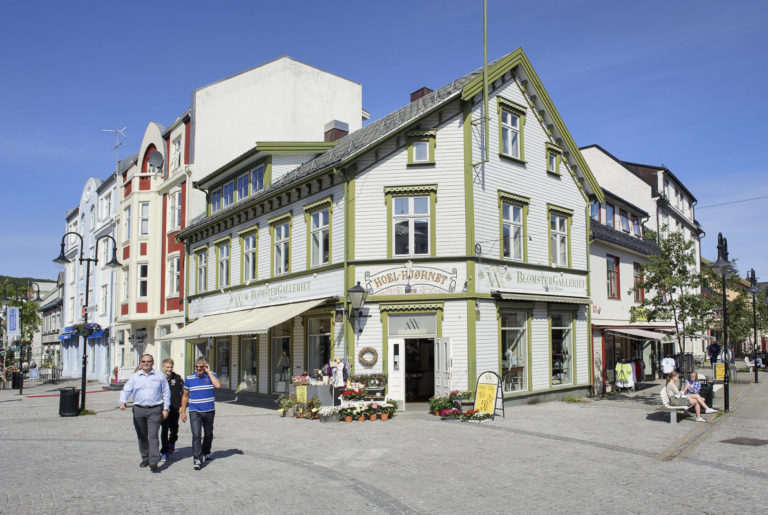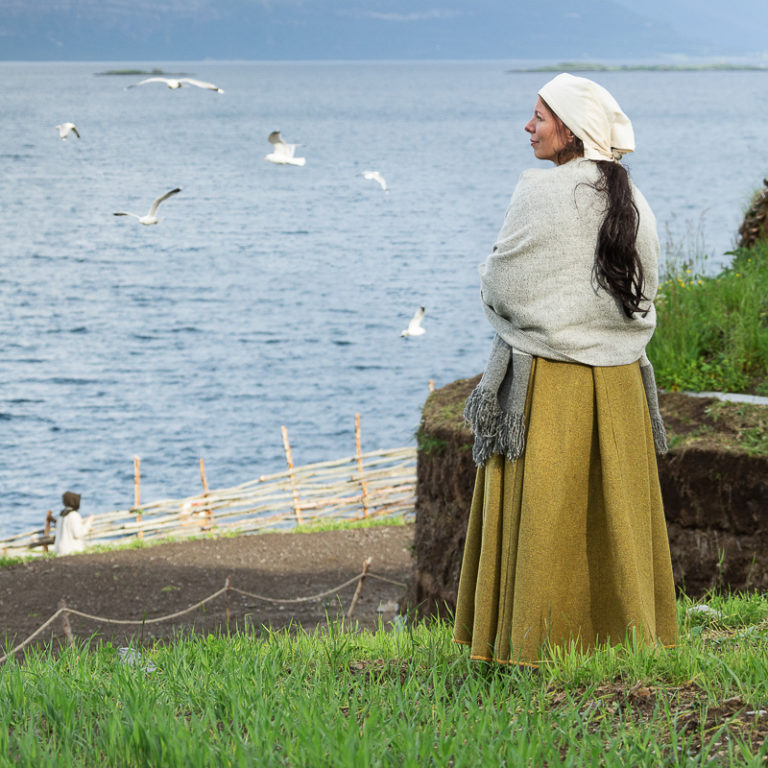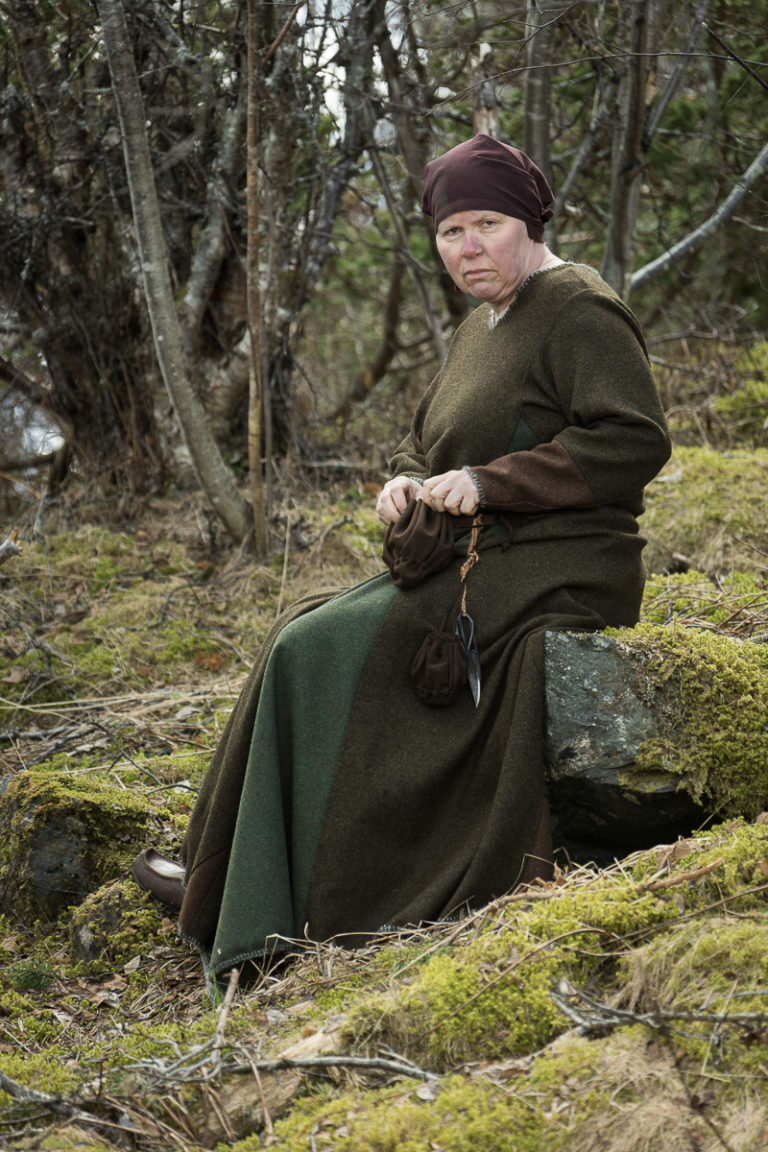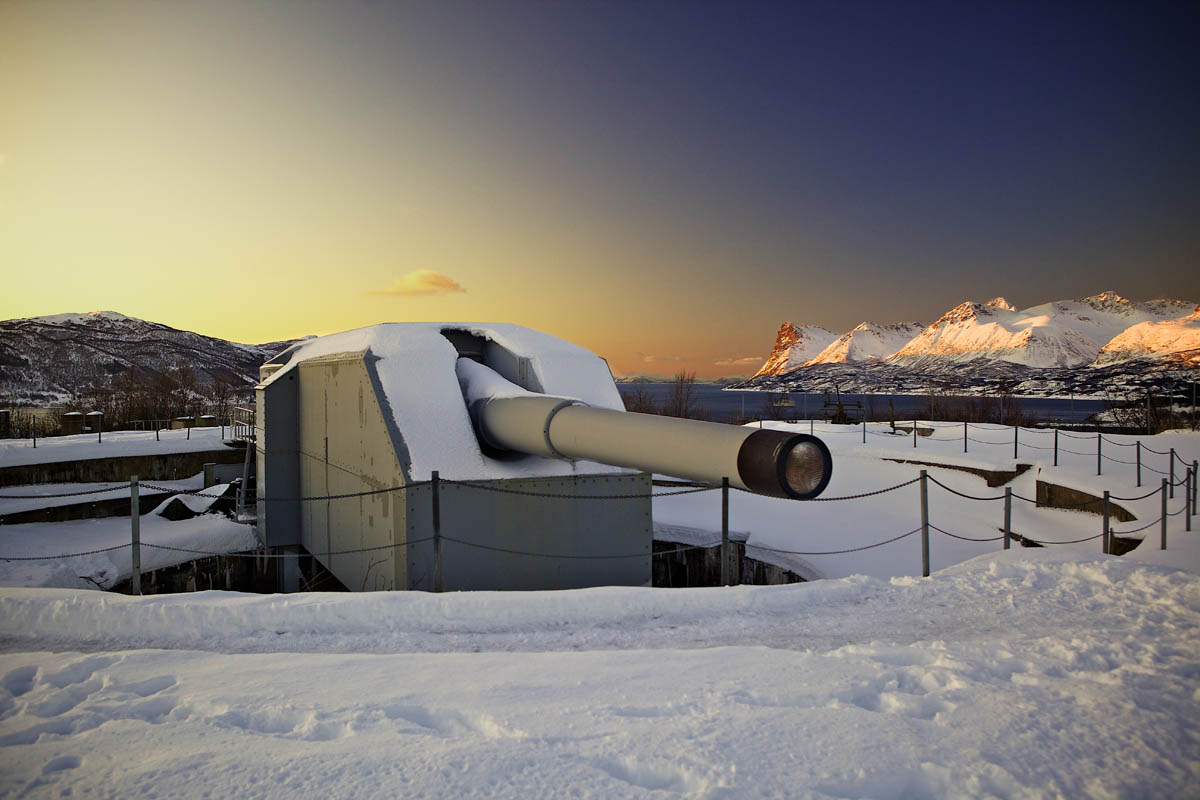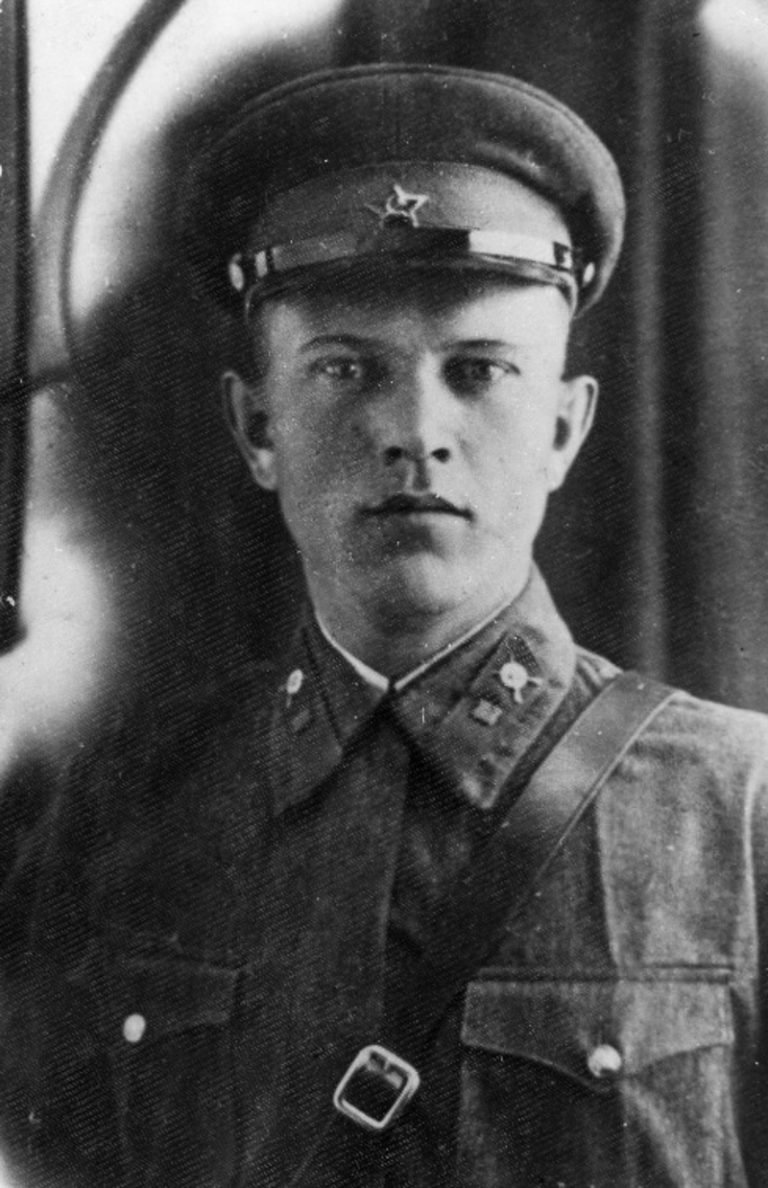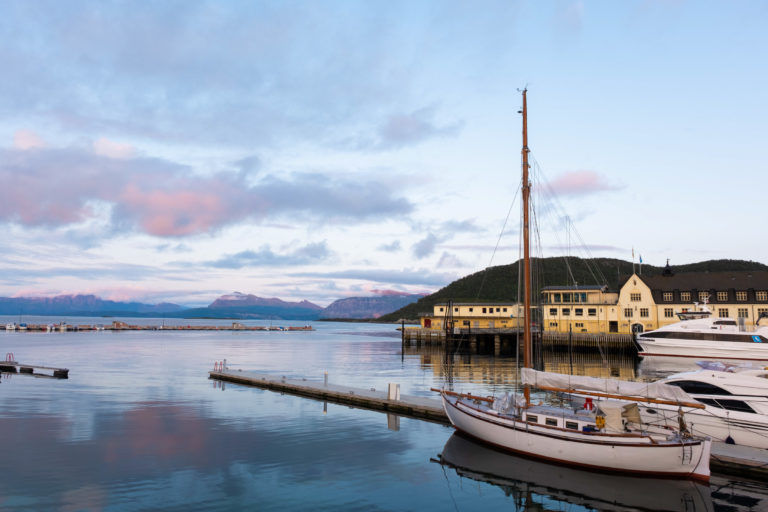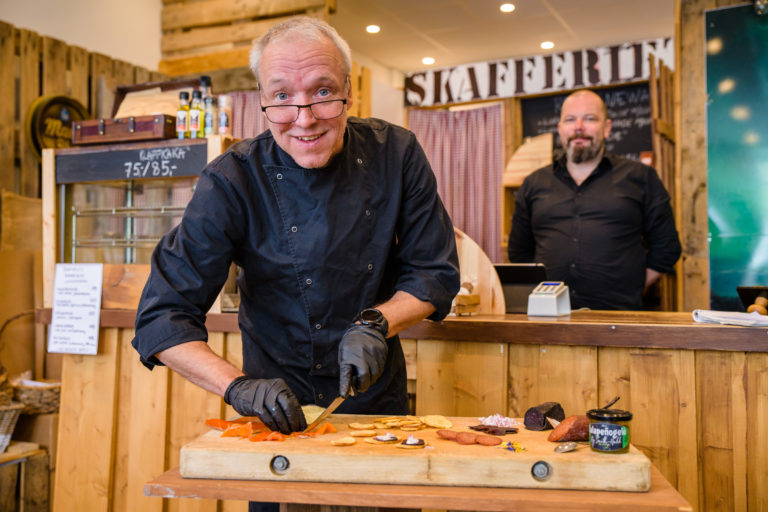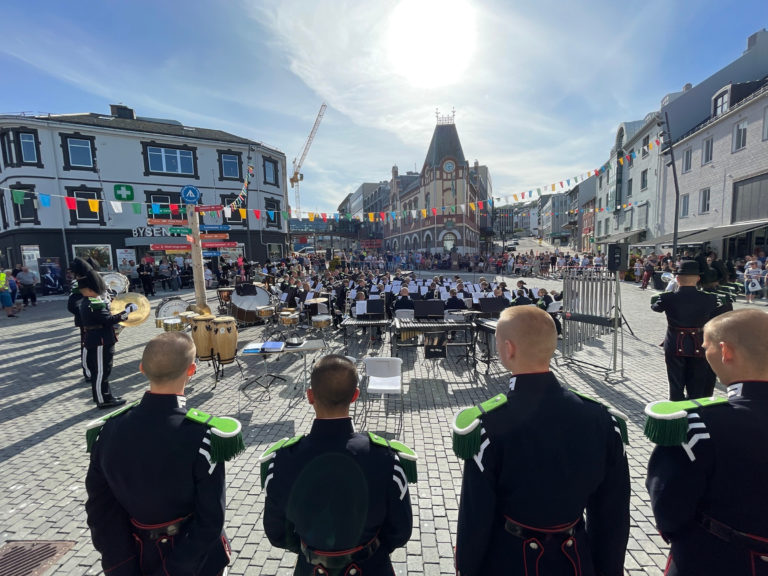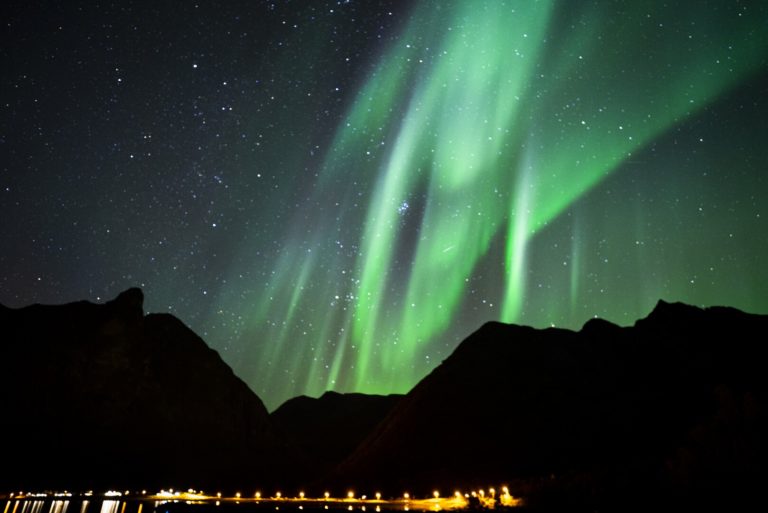On the sheltered, eastern slopes of the Hinnøya Island, overlooking the Vågsfjord, you find Harstad with its colourful centre of Art Nouveau, traditional wooden Scandi and modernity. Young as a city, Harstad was a Viking and Medieval power centre. Today, the city is known for the delicious food and the lively culture scene. It is also a good place to linger over a good cup of coffee. It is also the springboard the archipelago around Bjarkøy in the north, and to the friendly fjord of Kvæfjord in the west.
The Harstad area was the home of fierce Vikings
The Harstad area was the northernmost Viking power centre in Norway. In the basin around the Vågsfjorden, there is rich farmland. Yet more important back then were the trade connections with the Sami people north and east of Harstad, that could provide pelts and furs to be traded in the south. The leading clans could thus maintain an independent position against the kings of Norway trying to get their hands on the valuable trade links.
The sights are found at the Trondenes peninsula
Many of the biggest attractions in Harstad are found on the peninsula called Trondenes, just north of the centre. Here you find the old church of Trondenes, the Trondenes Historic Center and the Adolf Gun, all found in a historic landscape and with great views. Walk here (ok, plenty of taxis and buses) along the Stien langs sjøen (“path along the sea”) and spend a relaxed day out here. Alternatively, the rental e-bikes are a fun way of getting there, and then you can also go for a spin in the Harstad forest.
The church of Trondenes is a historical gem
Rising stately over the Vågsfjord, the 13th c. church of Trondenes is an outpost of European gothic. It is one of Norway’s biggest medieval country churches and is of course the world’s northernmost medieval church. The interior is also richly adorned, with no less than three late gothic triptychs and a 1795 organ. Interestingly, the church is also surrounded by remnants of walls built in the 12th c., to protect the predecessor, a stave church, from attacks from the north and east.
The Adolf gun was among the biggest guns in WWII
Some of the biggest guns built in World War II – the Adolf Guns – were transported from Germany to Trondenes for the occupying forces. To secure the waterway to the iron ore harbour of Narvik from allied attacks, they stationed the canons on top of the Trondenes peninsula. From here, they could sink any allied ship. This is the only place in the world where these guns are preserved, and they can be visited inside the military premises of Trondenes Fort at regular hours.
Trondenes historic centre explains all the history
To put all this history into context, go visit the Trondenes historic centre. Here you follow the history from the stone age onwards. A beautiful bronze age necklace and a big iron age cauldron are among the treasures. The rich Viking heritage is explained in depth, and you get to hear the story of the mighty chieftains of the area. The middle ages are an equally rich period in local history. More sinister is the exhibit on WWII, when Soviet POWs were forced to built fortifications while being starved and mistreated.
Trondenes medieval farm makes history alive
More lively than any museum is the Trondenes medieval farm, a reconstruction of a typical farm from the 13th c. Different from most museums,. you actually get to meet the inhabitants of the farm, from the mighty matrone Jorunn running the farm with a firm hand to the farm hand Limp-Halvor. You’re invited to take part in the daily chores, such as cutting linen and tending the animals. Or you can just sit down for a chat about the good old days.
Walk around Trondenes for more insight
The Trondenes peninsula is also a place to explore on your own. Just outside the Trondenes church, there are the remnants of the prisoners camp from WWII. Walk across the road toward Lake Laugen, and see remnants from the time when people from the northernmost part of Norway were housed in a camp here while their war-torn towns and villages were rebuilt. The lake itself is a bird’s sanctuary. Finally do the walk down to Altevågen to see the traces of Viking boat houses, the longest of which is 30 metres. All these things need a trained eye, but the walk is easy and beautiful through culture landscapes and nature.
Spend time in Harstad’s colourful centre
Ask anyone in the north, and they will tell you that Harstad is a nice place to linger. They think about the compact little centre with its mixed architecture displaying all varieties of Norwegian architecture from the late 19th c. onwards. In all its colours and shapes, it creates an entertaining ambience. Here you find some cozy cafes, a few independent shops and some bars to look into. Go for a walk from the docks up to the nearby residential areas.
Harstad has the best food in the north
Harstad is a place to eat well. Fish and clams from cold waters, slow-grown vegetables and berries and meat from free range pigs, sheep and goats; the local ingredients are fantastic. They can be prepared in traditional ways, or spiced with influences by world cuisine and the latest trends. Unique tastes thus await your tastebuds. Eat well in the city of Harstad, and venture out into the farmland to small farmshops and cafes dedicated to the locals tastes. And don’t forget the Norwegian national cake, Kvæfjordkaka, originating in the area.
Røkenes gård is a stately farm
The farm at Røkenes is a gem. The main building dates from 1750 and is filled with old furniture from various periods. The farmes at Røkenes had royal permission to sell liquor, and were thus wealthy enough to import exclusive furniture. Today, the farm is a homely, good restaurant, easily reached by rental e-bikes from town.
Bjarkøy has 100 sandy beaches
North of Harstad, there is an archipelago of hundreds of islands and skerries. Some of them are densely inhabited with farms and small hamlets. Others are mere rocks. The Krykkjeberget is an impressive colony of kittiwakes that gets particularly lively as the white-tailed eagles approach. Visit the Ole Ottestad house, see the little boat museum and walk the cultural path, passing remnants from the Viking age, when Bjarkøy was the seat of one of Norway’s mightiest Viking chieftains.
Bjarkøy is the Viking island
Explore the archipelago by kayak or by RiB
The hundreds of skerries and islets are of course a paddler’s paradise. The numerous islands make for sheltered waters, and even beginners can look for Viking traces, see and hear the rich birdlife and land on a beach for lunch. You can hire a kayak or go on a guided tour. There is also a RiB boat company in Harstad, taking guests to the islands and back on fast, sturdy boats.
Kvæfjord is the strawberry fjord
The eastern shore of the Kvæfjord, west of Harstad, is both protected against storms and exposed to the mild winds of the Gulfstream. Combined with fertile soils, it means that Kvæfjord is an agriculturally rich area. If you come here in late Summer, you can enjoy the strawberries grown under the Midnight Sun. Many farms welcome guests of a visit, and at Refsnes matglede you can sample local products. Visit the Hemmestadbrygga local museum and see the gallery of art made by intellectually disabled people at the Trastad farm.
Hiking in Harstad can be easy or challenging
The hills closest to Harstad are of the kind variety, with forest trails and hiking on soft heather. The Keipen trail offers fabulous views of fjords and islands, but is actually quickly done and accessible for all. For more challenging hikes, go to the nearby Grytøya Island, or across the fjord to Andørja Island where steep ascents await you. There are also great peaks south of the city.
Festival of Northern Norway
Every year around Midsummer, Harstad invites to the most versatile music festival in the north. Inside the medieval church of Trondenes, in the culture house, in the numerous pubs and bars and even outdoor, there is a concert of every musical genre, a dance performance or a jam session. Come here for some choice musical experiences, and make sure you have plenty of time to enjoy the atmosphere.
Harstad enjoys the Midnight Sun for two months
Harstad is found some 300 km north of the Arctic Circle, and enjoys the Midnight Sun from the 21st of May to the 21st of July, thus it doesn’t set for two whole months. The sun is visible from the dockside of Harstad, and a favourite motif are the masts of the scooner Anna Rogde against the midnight sun. Others prefer to go to Gangsåstoppen, a hill on the southern edge of the city, and see the sun over the city. An excursion to Nupen, however, is the ultimate Harstad Midnight Sun experience. This viewpoint on the Northern tip of the Hinnøya Island has been declared the most romantic location in Norway.
Stop in Harstad on your summer trip around the north
In the busy summer holiday season in Northern Norway, Harstad is visited by people heading between better known destinations such as Lofoten and Tromsø. However, those who decide to stop longer, find that Harstad has a lot to offer. The combo of a walk around the sights of the Trondenes peninsula, a good meal in a local restaurant and the comfortable hotels is unbeatable. Add another day for an excursion into the countryside or a mountain hike in areas far from overran with tourists.
Guaranteed seaview!
The autumn is perfect for a long week-end
Harstad looks stunning in the autumn colours, both the native birches, aspens and rowans and the introduced elms and maples are ablaze in strong colours. This is also the time the culture house starts up its ambitious programme of concerts and theatre. Throw in a light, colourful hike, some good food, the aforementioned sightseeing walk and plenty of time to hang in cafes, and your autumn long week-end is perfect.
Have fun outdoor in the mild Harstad winter
Winters in Harstad are surprisingly mild. The temperature drops only a few marks below freezing, but snow is usually plentiful. People come here to go dog sledding, cross country skiing in well-marked trails, go downhill and try fatbike. The biggest draw, however, are the Northern Lights. Of course, Harstad’s vibrant cultural scene and gourmet qualities add to the experience.
Harstad is right under the Northern Lights oval
Harstad enjoys an excellent location to see the Northern Lights, as the Northern Lights Oval around the magnetic North Pole passes 100 km overhead in Harstad. Don’t be surprised to see the lights in the middle of town, but dedicated Northern Lights seekers should go for a long walk in the forest around town. This will minimise the effect of light pollution, and the area north and west of town is particularly good, since a weak eruption often occurs in the northwest.
Harstad is best explored by bike
An excellent way to explore the city itself as well as the surrounding areas is to walk down to the tourist information and hire a bike. Since the sights are somewhat spread out, a bike takes you hassle-free around. Don’t worry about the traffic, Harstad is wonderfully peaceful and has the most polite drivers in the north. If you really want to go for a spin, there are marked trails in the surrounding forests, giving ample opportunities for fun cycling. In winter, you of course go for the fatbikes that can ride on snow.
Anna Rogde has sailed the seven seas since 1868
The proud scooner Anna Rogde is one of the world’s most prominent maritime heritage items. In the 19th C., she was a freighter of salted, dried fish from the island of Kjøtta to the international markets. She has been everywhere from Portugal to Arkhangelsk and remained in the Rogde family until the local museum took over. When she’s not on some mission, she can be observed in the port of Harstad all year
Practical on Harstad
Harstad is a city with some 25 000 inhabitants about 300 km inside the Arctic Circle in Norway. It is straight west of Narvik, northeast of the Lofoten Islands and south of Tromsø.
There is the Harstad/Narvik Airport at Evenes, a small hour east of Harstad, with frequent flights to Oslo. Harstad is a port of call for the legendary shipping line Hurtigruten. The Norwegian rail system ends in Bodø. From the station before Bodø, at Fauske, there are buses north to Harstad. Check EnTur for the best connection. The railway station in Narvik, connected with the Swedish network only, is a couple of hours by bus away.
Harstad has it all, from campsites and friendly budget accommodation to good hotels. In the summer, when it fills up in Lofoten and Tromsø, the undiscovered gem Harstad often has free capacity and competitive rates. Of particular interest are the numerous holiday homes spread out in the area around Harstad. Check the Visit Harstad website for all the details.
There are several buses a day, either changing bus at Tjeldsundbrua bridge or going through Sortland in the Vesterålen Islands. Check EnTur for the best connection. NB! If you’re unsure about geography in Lofoten, search for connections to Svolvær.
There is a catamaran several times a day between Harstad and Tromsø, taking less than three hours. EnTur has the departure times.

Visit Harstad
Your guide to all things fun and interesting in Harstad is Visit Harstad

